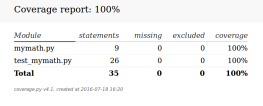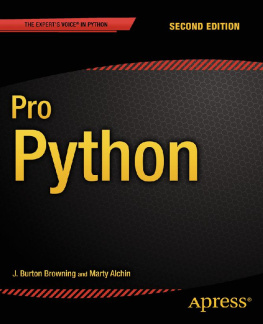He's particularly adept at struggling with thorny data representation problems.
He is currently a technomad who lives in various places on the east coast of the US. His technology blog can be found at http://slott-softwarearchitect.blogspot.com.
About the Reviewers
Amoatey Harrison is a Python programmer with a passion for building software systems to solve problems. When he is not programming, he plays video games, swims, or simply hangs out with friends.
After graduating from the Kwame Nkrumah University of Science and Technology with a degree in computer engineering, he is currently doing his national service at the GCB Bank head office in Accra, Ghana. He also helped review a book on Python programming, Functional Python Programming,Packt Publishing , which was published in January 2015.
He would like to think of himself as a cool nerd.
Alessio Di Lorenzo is a marine biologist and has an MSc in geographical information systems (GIS) and remote sensing. Since 2006, he has been dealing with the analysis and development of GIS applications dedicated to the study and spread of environmental and epidemiological data. He is experienced in the use of the main proprietary and open source GIS software and programming languages.
He has coauthored OpenLayers Starter and reviewed ArcPy and ArcGIS Geospatial Analysis with Python , both by Packt Publishing.
Dr. Philip Polstra (known as Dr. Phil to his friends) is an associate professor of digital forensics in the Department of Math and Digital Sciences at Bloomsburg University of Pennsylvania. He teaches forensics, information security, and penetration testing. His research over the last few years has been on the use of microcontrollers and small computer boards (such as the BeagleBone Black) for forensics and penetration testing.
He is an internationally recognized hardware hacker. His work has been presented at numerous conferences across the globe, including repeat performances at Black Hat, DEFCON, 44CON, B-sides, GrrCON, ForenSecure, and other top conferences. He has also provided training on forensics and security, both in person and online via http://www.pentesteracademy.com and other training sites.
He has published a number of books, including Hacking and Penetration Testing with Low Power Devices , Syngress , and Linux Forensics from A to Z , PAP . He has also been a technical editor or reviewer on numerous books.
When not teaching or speaking at a conference, he is known to build electronics with his children, fly airplanes, and also teach others how to fly and build airplanes. His latest happenings can be found on his blog at http://philpolstra.com.
www.PacktPub.com
Support files, eBooks, discount offers, and more
For support files and downloads related to your book, please visit www.PacktPub.com.
Did you know that Packt offers eBook versions of every book published, with PDF and ePub files available? You can upgrade to the eBook version at > for more details.
At www.PacktPub.com, you can also read a collection of free technical articles, sign up for a range of free newsletters and receive exclusive discounts and offers on Packt books and eBooks.
https://www2.packtpub.com/books/subscription/packtlib
Do you need instant solutions to your IT questions? PacktLib is Packt's online digital book library. Here, you can search, access, and read Packt's entire library of books.
Why subscribe?
- Fully searchable across every book published by Packt
- Copy and paste, print, and bookmark content
- On demand and accessible via a web browser
Free access for Packt account holders
If you have an account with Packt at www.PacktPub.com, you can use this to access PacktLib today and view 9 entirely free books. Simply use your login credentials for immediate access.
Preface
Python programming should be expressive and elegant. In order for this to be true, the language itself must be easy to learn and easy to use. Any practical languageand its associated librariescan present a daunting volume of information. In order to help someone learn Python, we've identified and described those features that seem essential.
Learning a language can be a long voyage. We'll pass numerous islands, archipelagos, inlets, and estuaries along the route. Our objective is to point out the key features that will be passed during the initial stages of this journey.
The concepts of data structures and algorithms are ever-present considerations in programming. Our overall approach is to introduce the various Python data structures first. As part of working with a given class of objects, the language statements are introduced later. One of Python's significant advantages over other languages is the rich collection of built-in data types. Selecting an appropriate representation of data can lead to elegant, high-performance applications.

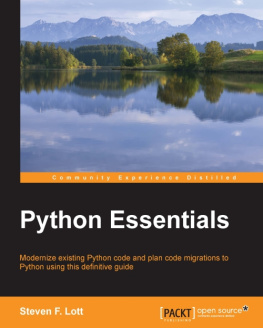



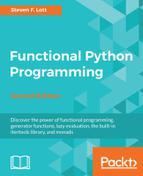
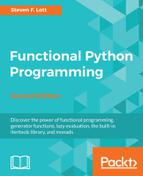
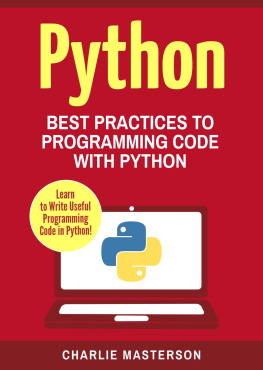

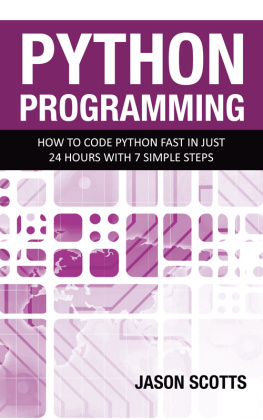
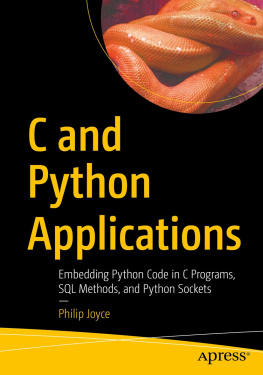
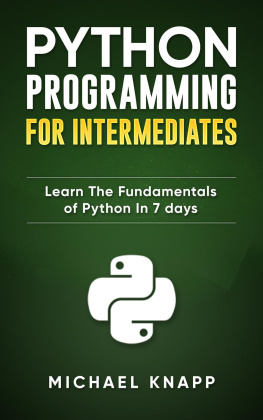
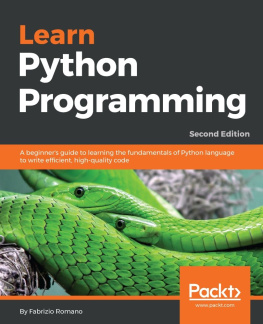

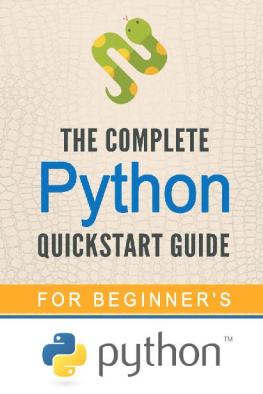
![Joannah Nanjekye [Joannah Nanjekye] - Python 2 and 3 Compatibility: With Six and Python-Future Libraries](/uploads/posts/book/124063/thumbs/joannah-nanjekye-joannah-nanjekye-python-2-and.jpg)
